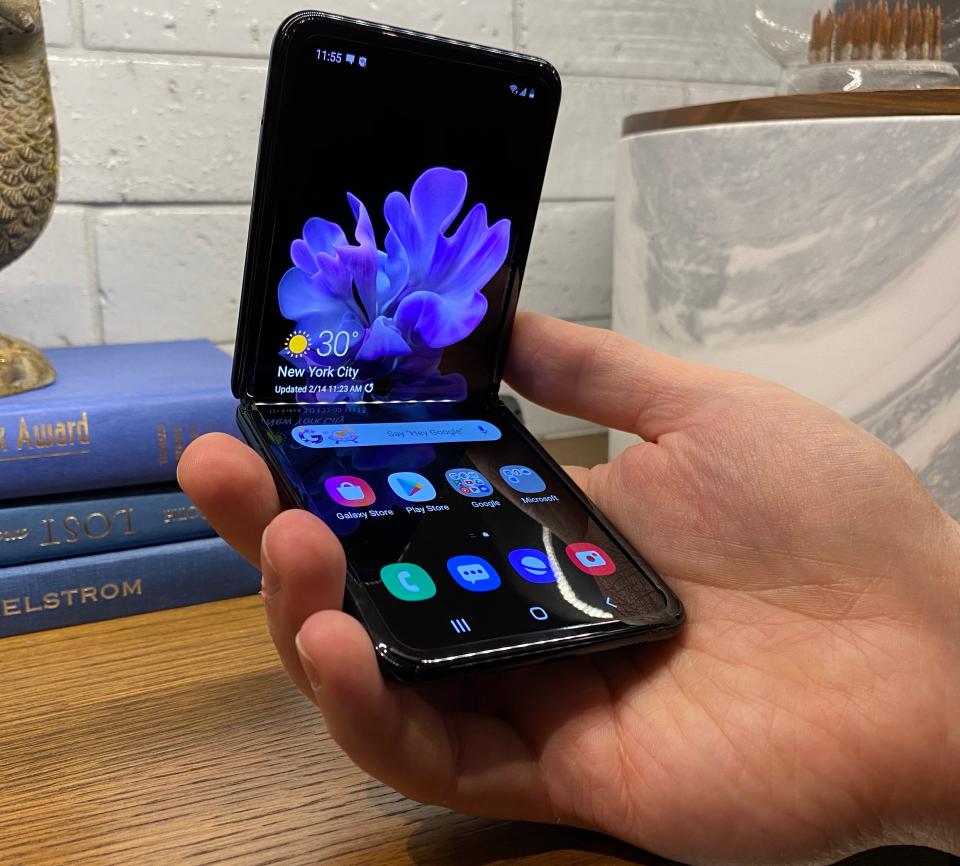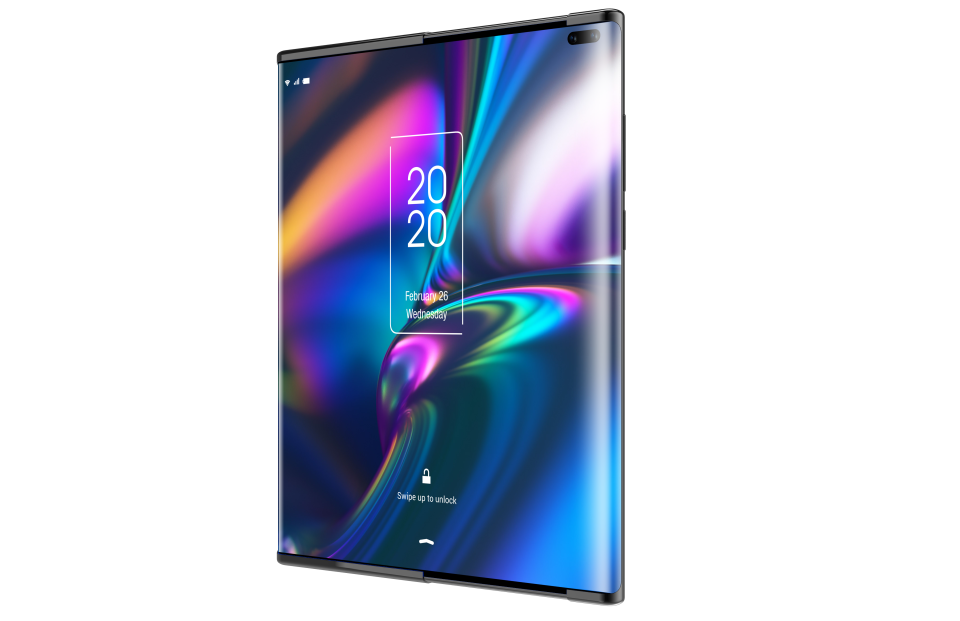Why smartphones are finally exciting again
The smartphone market has been in a rut for some time now. Ever since tech companies settled on the flat, rectangular design of current touchscreen phones, there’s been little fundamental growth as far as the overall look and feel of our most personal devices.
Sure we’ve gotten more cameras, and improved durability, but a phone released today still more or less looks like a phone from 6 years ago. That, in turn, has, at least partially, led to a stagnation, and even decrease, in smartphone sales growth, along with other factors like the end of subsidized two-year upgrades.
That’s all beginning to change, though. Just this week, Chinese electronics company TCL debuted a tri-fold device that unfolds from a phone into a full-size tablet. With the advent of folding and sliding screens, other manufacturers like Samsung, Huawei, and Motorola are also experimenting with new, far-out designs. Just as companies set about testing different styles with the very first crop of smartphones, we’re once again at the start of a major shift in the way our phones look and feel.

And those changes could come sooner than you think.
The foldable revolution
If you’re old enough to remember a time before smartphones, you likely owned a flip phone. With their simple, feature phone interfaces, and compact design, flip phones were, at one point, the go-to cellphone for consumers. And, as an aside, nothing will ever be more satisfying than slapping a flip phone shut to hang up a call.
Smartphones killed flip phones, but thanks to folding screens developed by the likes of Samsung and Motorola, those slap-happy phones are making a comeback with far more advanced technologies. And unlike traditional smartphones, with their large, pocket-busting footprints, foldables could give users all of the use of a smartphone, in a smaller package.
“Foldable phone functionality is just beginning to be discovered (as in, what types of applications and use cases benefit from a foldable screen),” Gartner senior principal analyst Tuong Nguyen explained via email.

“One possibility is it consolidating, or extending (depending on how you look at it) the different computing form factors we use today (laptops, tablets, ultramobiles, smartphones) into one,” he added.
So far, smart flip phones have proven incredibly expensive by most measures. The Samsung Galaxy Z Flip, my personal favorite smart flip phone, costs $1,380, while Motorola’s Razr, which has received a good deal of negative attention due to its build quality, starts at $1,499.
The durability of both phones has also been called into question, with the Z Flip’s panel being susceptible to piercing and gouging, and the Razr’s display bubbling after a few days of use.
Samsung’s original Galaxy Fold, which cost a whopping $1,980, also had problems with its design. A gap near its hinge allowed dust and particulates to work their way behind the phone’s display, pushing on it until blemishes were visible.
None of those phones were waterproof, either, a nonstarter for many consumers who are used to their devices being able to survive being submerged for upwards of 30 minutes, let alone taking a quick bath from a spilled drink.
More than a single fold
It’s not just reimagined flip phones or book-style foldables, though. Manufacturers are looking at every which way to implement folding technology into their devices. Take, for instance, TCL’s recently debuted tri-fold concept phone.
The device, which is still very much in early development, has two different hinges, one that folds inwards and the other that folds out, almost like a paper map. When folded up, the tri-fold concept sports a 6.65-inch panel. But unfold it and the screen expands to a massive 10 inches. That’s nearly the same size as the 10.2 inch display found on Apple’s iPad.

In fact, that’s the point of such a design, to provide users with a phone that can quickly fold out into a full-size tablet, eliminating the need to carry around two separate devices.
The tri-fold concept isn’t exactly lightweight though, nor is it ready for primetime. It runs Google’s Android operating system, but, as a concept, is still finicky.
Then there’s TCL’s second concept device, a rollable, extending-screen smartphone. Similar to LG’s R9 rollable TV, which unravels like a window shade, TCL’s concept will pack a small motor inside and extend its screen from 6.75 inches to 7.8 inches.
Where we go
Currently, foldable phones and their ilk are only available through a handful of manufacturers. But that could soon change. Apple (AAPL), for example, has filed patents for its own foldable iPhones including one with a tri-fold design.
It’s important to note, however, that companies patent different designs and products all the time without anything ever coming of them. So until Apple says otherwise, don’t count on a folding iPhone anytime soon.
There’s also the question of what functional benefit foldable phones offer over their flat-screen contemporaries. While a smaller footprint is certainly worthwhile, it may not be enough to get consumers to drop upwards of $2,000 on an unproven design.
“Foldable phone functionality is just beginning to be discovered (as in, what types of applications and use cases benefit from a foldable screen),” Nguyen said. “One possibility is it consolidating, or extending (depending on how you look at it) the different computing form factors we use today (laptops, tablets, ultramobiles, smartphones) into one.”
Ramon Llamas, research director for mobile devices at IDC, says that foldable devices are just the next evolutionary step for smartphones, though they may only draw a limited audience.
“I don't know about you, but I've been enjoying this evolution of mobile phones we've had for the last ten to fifteen years. Think about it: once upon a time, silver clamshells were all the rage.”
There’s certain to be a slew of failures and flops between now and when foldable smartphones become the norm, or at least reach a level of affordability and durability that consumers are comfortable with. Until then, it’ll be interesting simply watching what each company manages to cook up.
More from Dan:
What you need to work from home during the coronavirus outbreak
Apple could still see historic iPhone sales despite coronavirus
Samsung Galaxy S20 review: A $1,399 smartphone with a massive camera
‘We’ll have the first global cyber warfare this year’: Nouriel Roubini
Got a tip? Email Daniel Howley at [email protected] or [email protected], and follow him on Twitter at @DanielHowley.
Follow Yahoo Finance on Twitter, Facebook, Instagram, Flipboard, SmartNews, LinkedIn, YouTube, and reddit.
